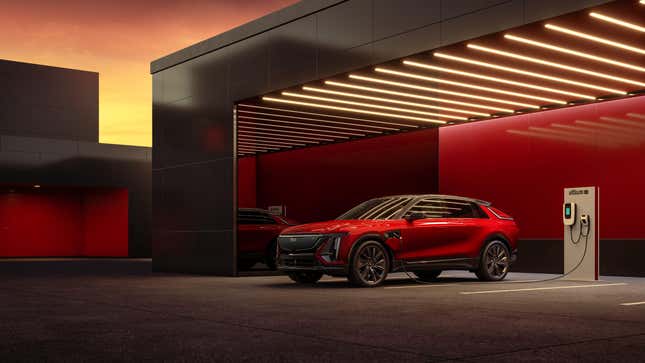
Next year will get very interesting for both EV buyers and dealerships. Beginning January 1, 2024, EV buyers will be able to apply the $7,500 (and $4,000 for used EVs) federal tax credit directly to the price of an eligible EV right at the time of purchase.
Originally, the tax credit was tied to the location of where an EV’s battery was produced. The plan was to get more automakers invested in making batteries in the U.S. or at least North America, as Ars Technica explained:
The original IRS section 30D tax credit, meant to spur the adoption of plug-in vehicles, was tied to the storage capacity of a car’s battery pack. But from this year, the $7,500 credit is now linked to domestic battery manufacturing rather than just battery capacity, with annually escalating percentages of the battery required to come from the US or a country with a free trade agreement in order to qualify.
That stipulation still applies. While there are 45 different EV models for sale in the U.S. from multiple manufacturers, the law’s requirement that the EV’s battery be manufactured in the U.S. or a free trade agreement country means that just 10 EV models from six manufacturers qualify for the credit.
Aside from the qualifications, things should get easier for buyers. Here’s how its supposed to go down in 2024: EV buyers can head down to their dealership and apply that credit directly to the price of the car for $7,400 off. Buyers will be able to do this by essentially transferring the credit to the dealer of their choice. The dealer would then apply the credit to the price of the vehicle. After registering on an IRS website, the dealer would then get that $7,500 back from the government within three days. There are a few conditions though.
First, buyers must keep in mind not all dealers will be participating. Next, buyers should also know that they have to file a tax return for the year that they transferred the credit to the dealer. Next, perhaps most importantly, buyers also have to know the income limits and eligibility for the credit and not count on dealers to know this for them. Failure to do so could mean they’ll have to pay the credit back to the IRS come tax time if it’s found they didn’t qualify. Those income limits though are pretty high so most buyers shouldn’t have anything to worry about. From CNBC:
These are the annual income limits for the $7,500 new vehicle credit: $300,000 for married couples filing a joint tax return; $225,000 for heads of household; and $150,000 for single tax filers.
These limits apply to the $4,000 used vehicle credit: $150,000 for married couples filing a joint tax return; $112,500 for heads of household; and $75,000 for single tax filers.
These figures are based on “modified adjusted gross income.
Other caveats include the fact that the credit can only be applied to EVs sold from dealers that have registered with the IRS. If you decide that the EV you got isn’t for you and you want to return it, if the EV is returned within 30 days you forfeit the credit; the same applies if the buyer sells the EV within that time frame. Weirdly, if a buyer purchased a used EV and its returned within 30 days, that EV isn’t eligible for a credit anymore.
Hopefully things go smoothly at the dealer level as experts say these new changes will open up EVs to more buyers as it drastically changes affordability in favor of buyers.